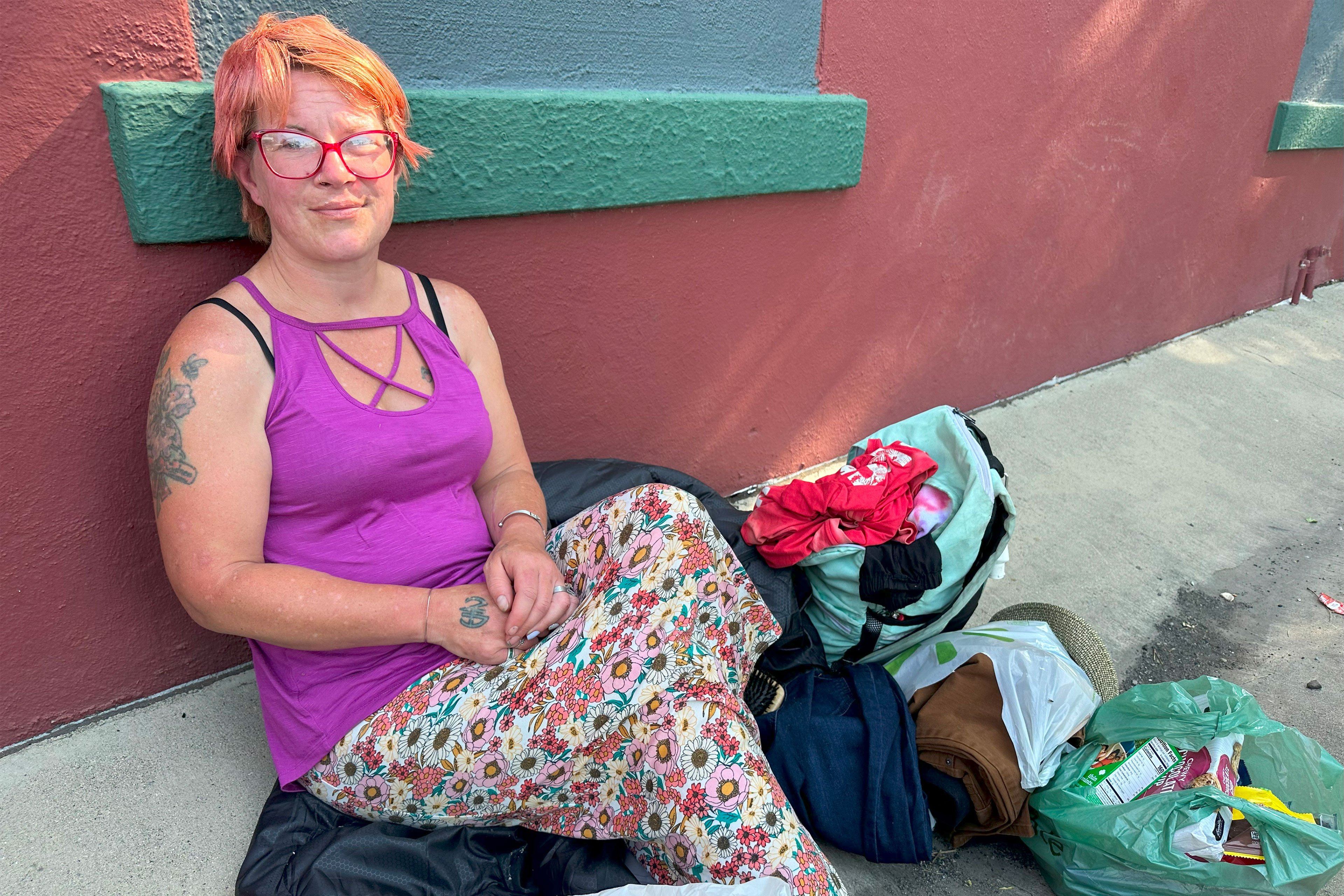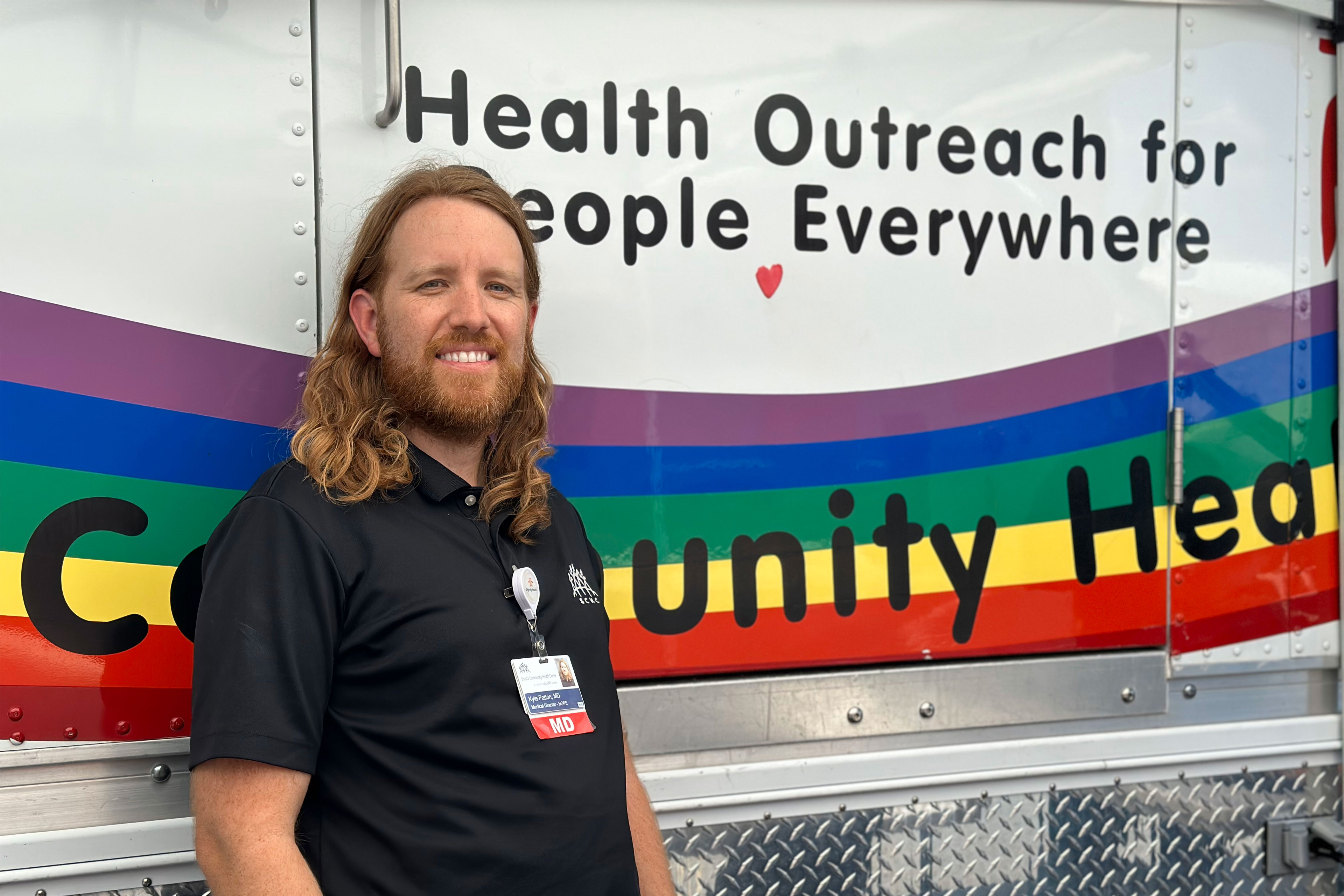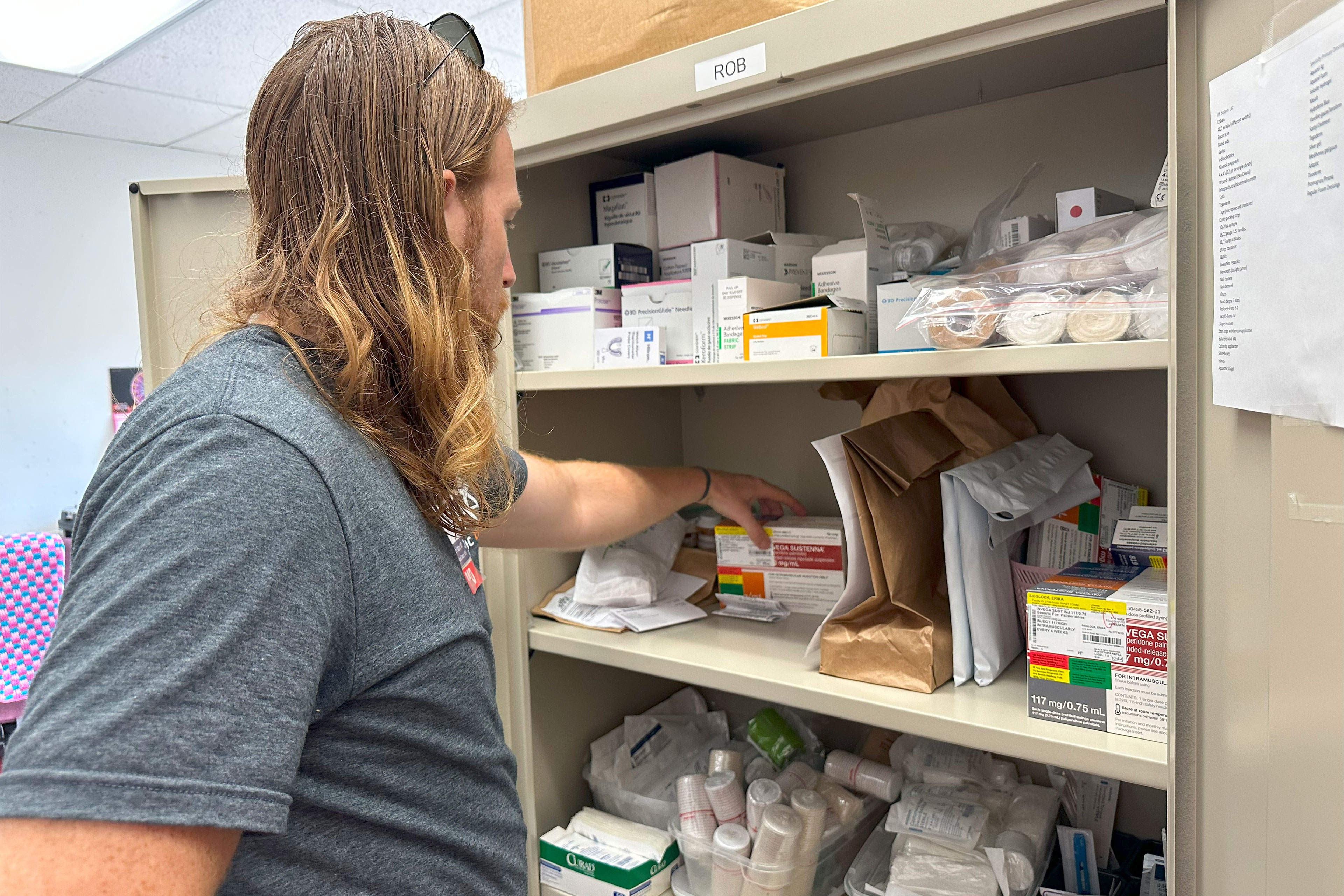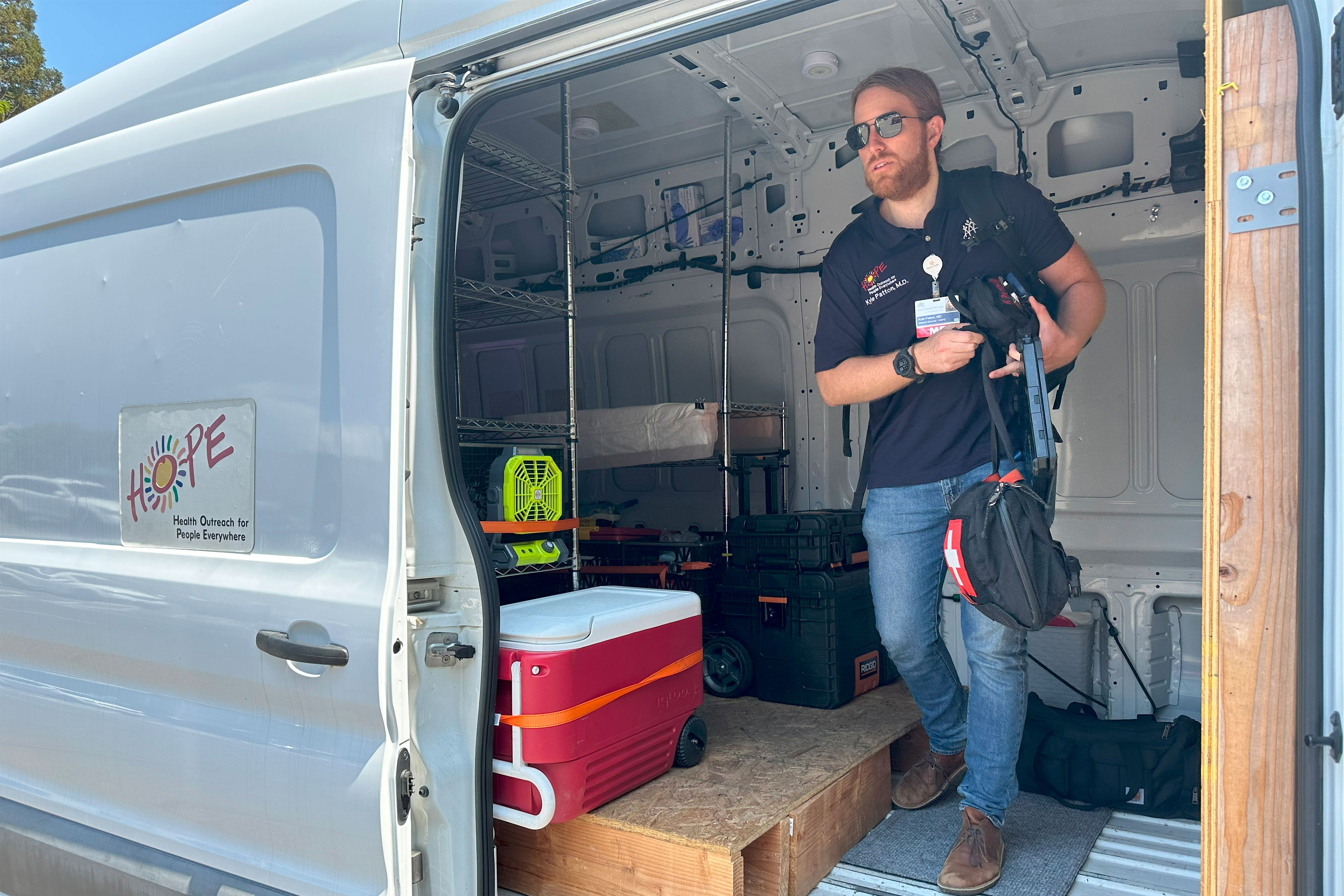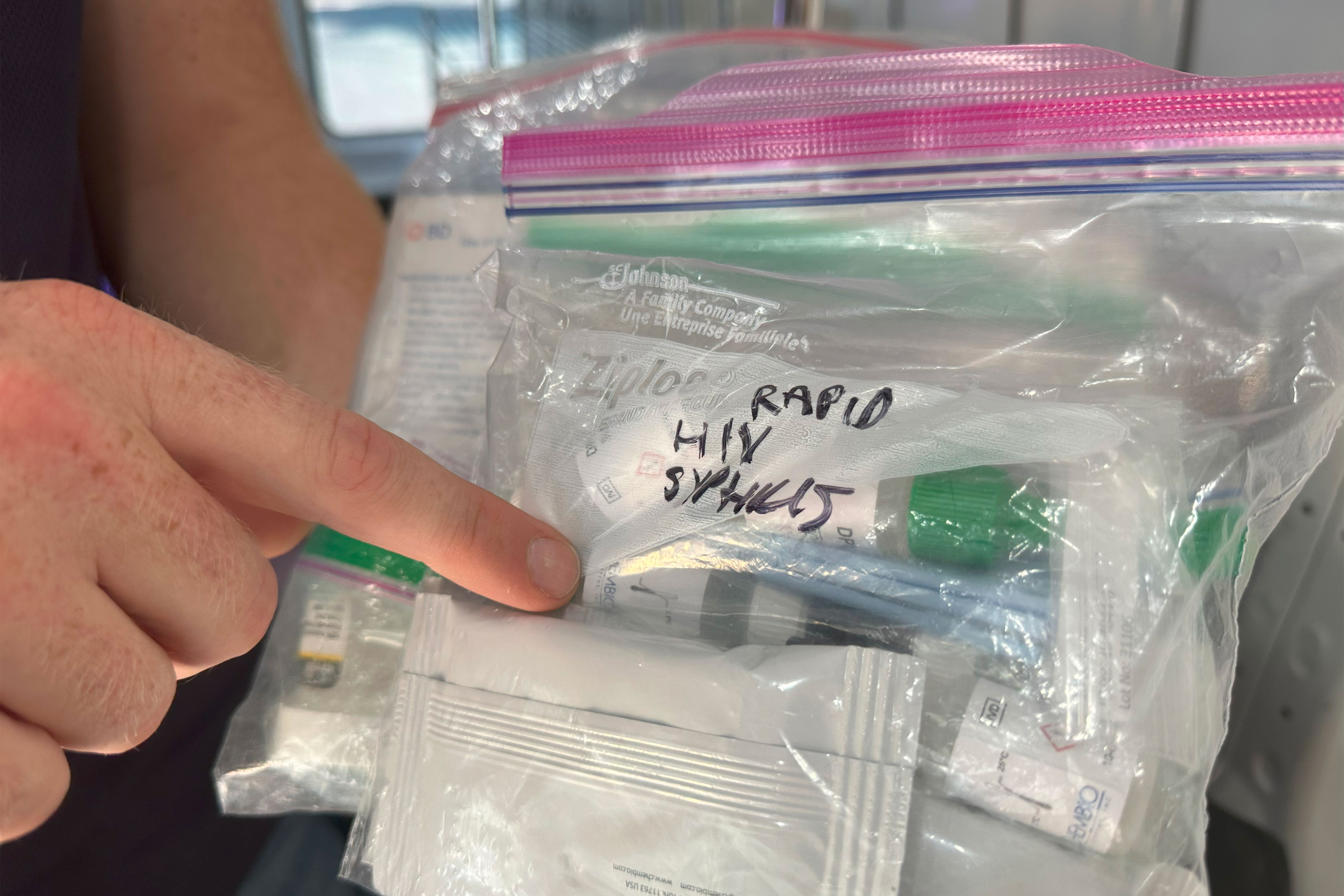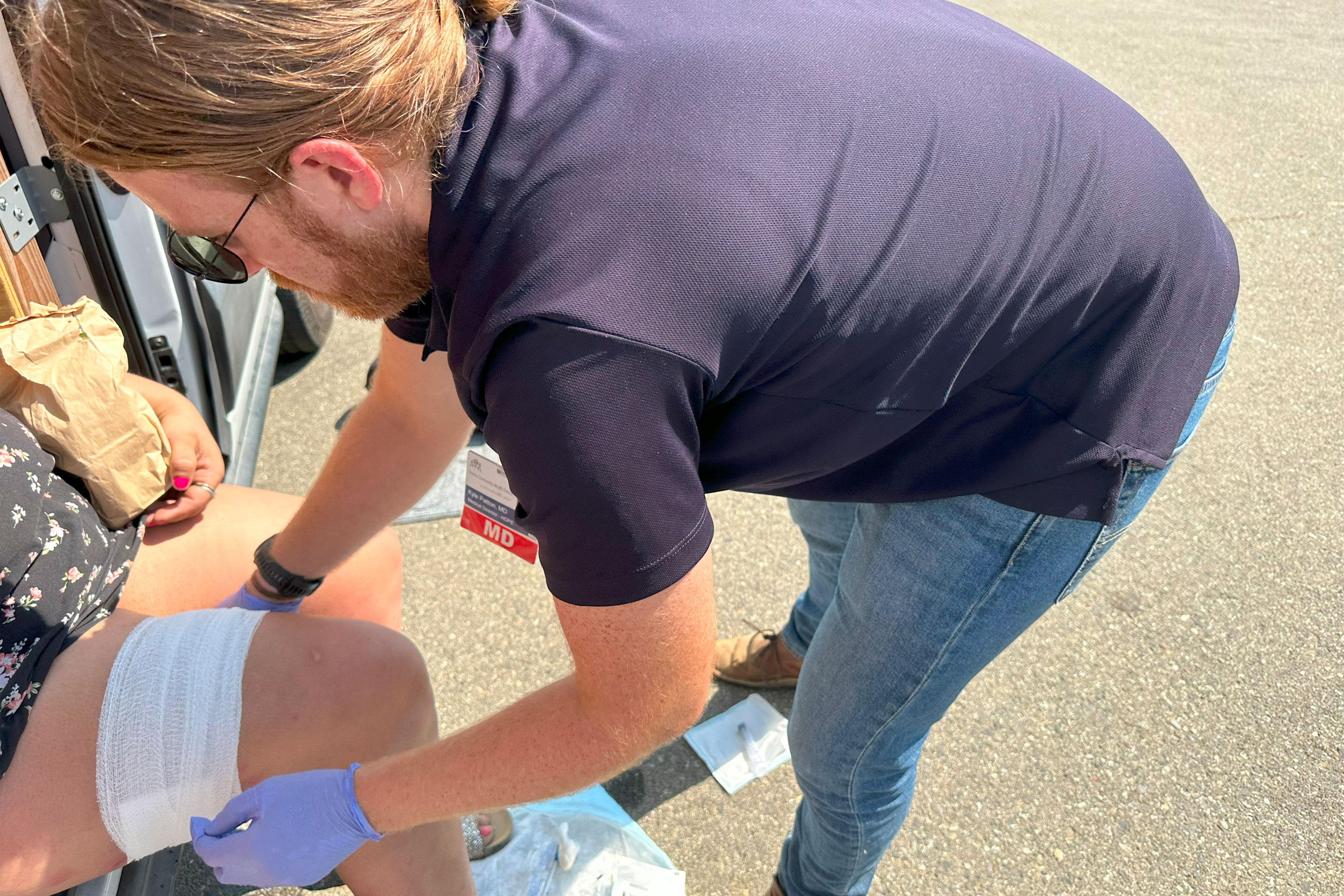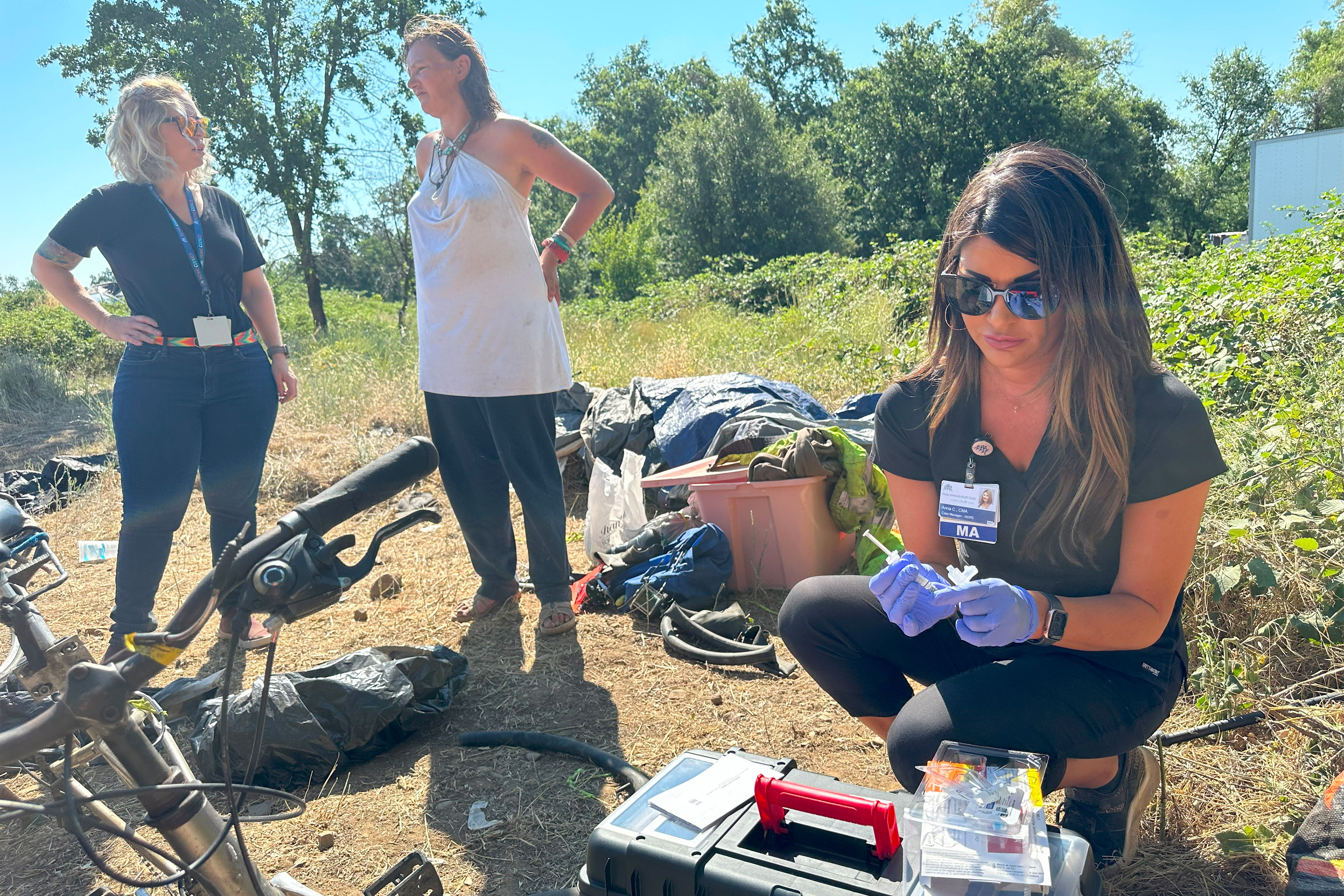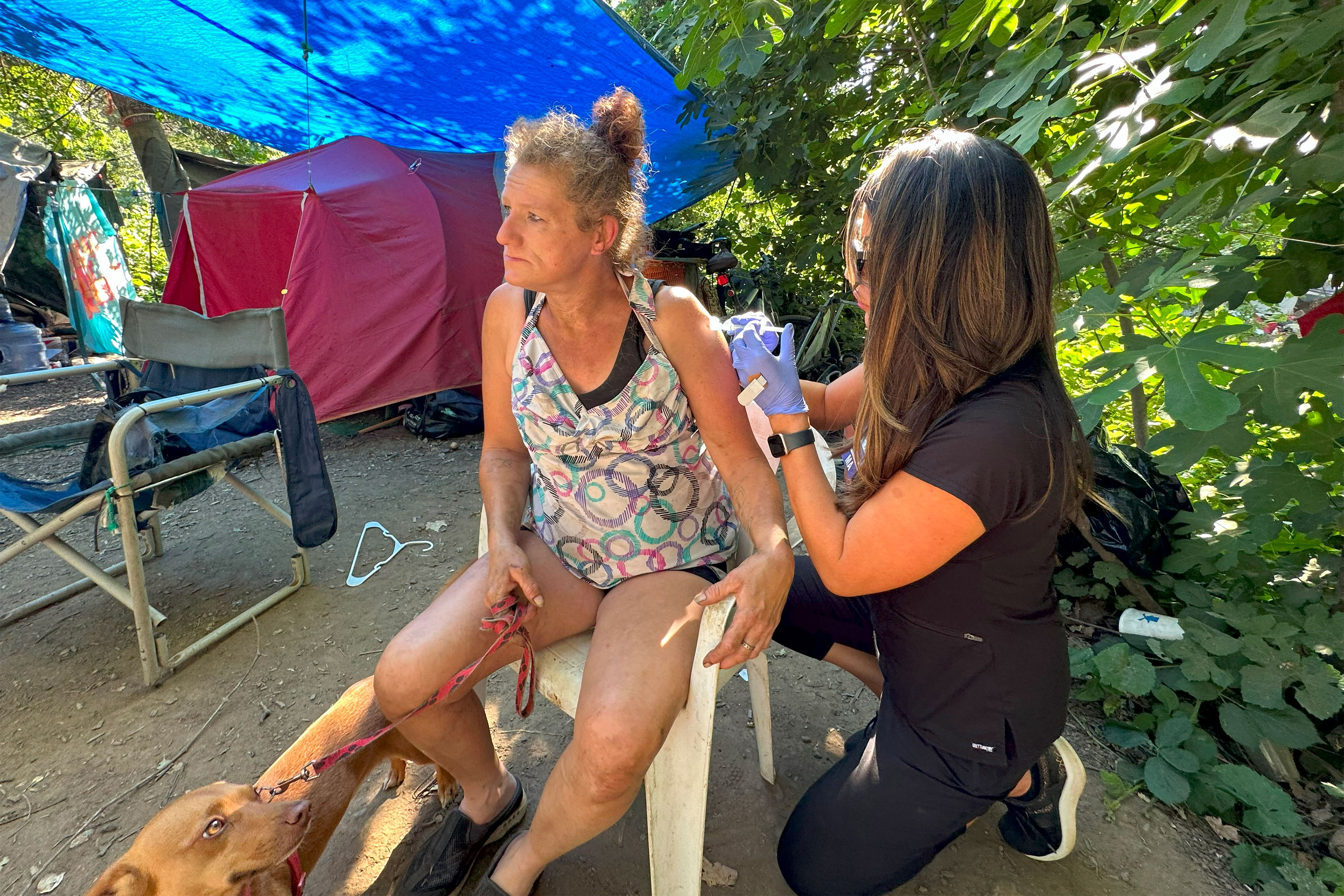REDDING, Calif. — Five days after giving birth, Melissa Crespo was already back on the streets, recovering in a damp, litter-strewn water tunnel, when she got the call from the hospital.
Her baby, Kyle, who had been born three months prematurely, was in respiratory failure in the neonatal intensive care unit and fighting for his life.
The odds had been against Kyle long before he was born last summer. Crespo, who was abused as a child, was addicted to fentanyl and meth — a daily habit she found impossible to kick while living homeless.
Crespo got a ride to the hospital and cradled her baby in her arms as he died.
“I know this happened because of my addiction,” Crespo said recently, just after a nurse injected her on the streets of downtown Redding with a powerful antipsychotic medication. “I’m trying to get clean, but this is an illness, and it’s so hard while you’re out here.”
Crespo, 39, is among a growing number of homeless pregnant women in California whose lives have been overrun by hard drug use, a deadly coping mechanism many use to endure trauma and mental illness. They are a largely unseen population who, in battling addiction, have lost children — whether to death or local child welfare authorities.
She and other women are now receiving care from specialized street medicine teams fanning across California to treat homeless people wherever they are — whether in squalid encampments, makeshift shantytowns clustered along rivers, or vehicles they stealthily maneuver from one neighborhood to another in search of a safe place to park.
“This is a really impoverished community and the big thing right now is maternity care and prenatal care,” said Kyle Patton, a family doctor who leads the street medicine team for the Shasta Community Health Center in Redding, about 160 miles north of Sacramento in a largely rural and conservative part of the state.
Patton, who dons his hiking boots and jeans to make his rounds, has managed about 20 pregnancies on the streets since early 2022, and even totes a portable ultrasound in his backpack to find out how far along women are. He’s also helping homeless mothers who have lost custody of their children try to get sober so they can reunite with them.
“I didn’t expect this to be a huge part of my practice when I got into street medicine,” Patton said on a hot June day as he packed his medical van with birth control implants, tests to diagnose syphilis and HIV, antibiotics, and other supplies.
“The system is broken and people lack access to health care and housing, so managing pregnancies and providing prenatal care has become a really big part of my job.”
Street medicine isn’t new, but it’s getting a jolt in California, which is leading the charge nationally to deliver full-service medical care and behavioral health treatment to homeless people wherever they are.
The practice is exploding under Democratic Gov. Gavin Newsom, whose administration has plowed tens of billions of dollars into health and social services for homeless people. It has also standardized payment for street medicine providers through the state’s Medicaid program, called Medi-Cal, allowing them to be paid more consistently. The federal government expanded reimbursement for street medicine this month, making it easier for doctors and nurses around the country to get paid for delivering care to homeless patients outside of hospitals and clinics.
State health officials and advocates of street medicine argue it fills a critical gap in health care — and could even help solve homelessness. Not only are homeless people receiving specialized treatment for addiction, mental illness, chronic diseases, and pregnancy; they’re also getting help enrolling in Medi-Cal and food assistance, and applying for state ID cards and federal disability payments.
In rare cases, street medicine teams have gotten some of the state’s sickest and most vulnerable people healthy and into housing, which supporters point to as incremental but meaningful progress. Yet they acknowledge that it’s no quick fix, that the expansion of street medicine signals an acceptance that homelessness isn’t going away anytime soon — and that there may never be enough housing, homeless shelters, and treatment beds for everyone living outside.
“Even if there is all the money and space to build it, local communities are going to fight these projects,” said Barbara DiPietro, senior director of policy for the Tennessee-based National Health Care for the Homeless Council. “So street medicine is shifting the idea to say, ‘If not housing, how can we manage folks and provide the best possible care on the streets?’”
The expansion of street medicine and other services doesn’t always play well in communities overwhelmed by growing homeless populations — and the rise in local drug use, crime, and garbage that accompany encampments. In Redding and elsewhere, many residents, leaders, and business owners argue that expanding street medicine merely enables homelessness and perpetuates drug use.
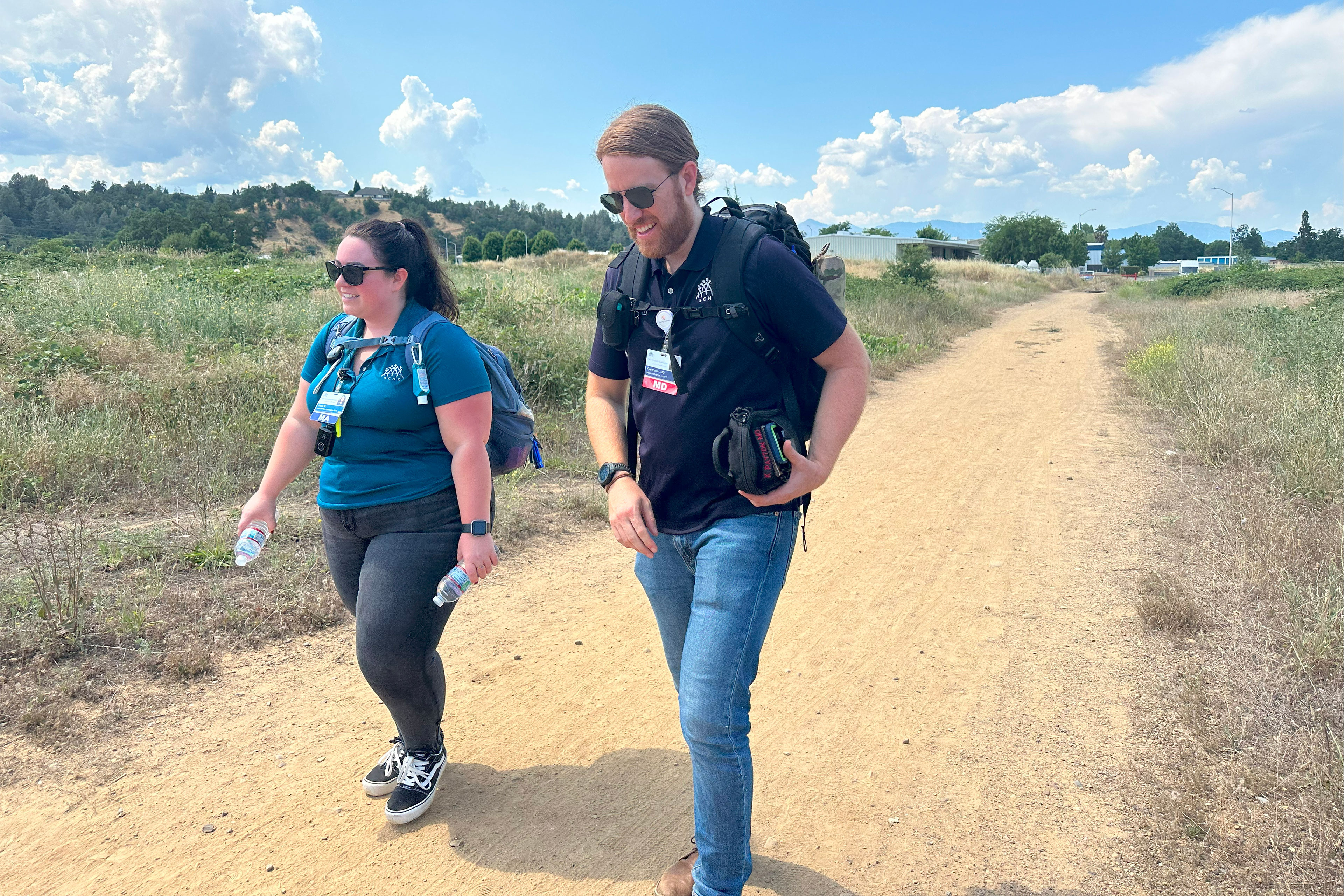
Patton acknowledges the process of getting people off drugs is long and messy. More often than not, they relapse, he said, and most expectant mothers lose their babies.
This is true especially of homeless mothers like Crespo, who has been using hard drugs for nearly two decades but is desperate to get clean so she can reconnect with her four living children; they range in age from 12 to 24, Crespo said, and she is estranged from all of them. Two other children have died, one from lymphoma at age 15 and baby Kyle, in August 2022, primarily due to complications from congenital syphilis.
Patton is treating Crespo for mental illness and addiction and has implanted long-acting birth control into her arm so she won’t have another unexpected pregnancy. He has also treated her for hepatitis C and early signs of cervical cancer.
Although she’s still using meth — as is her boyfriend, Kyle’s father — she’s six months sober from fentanyl and heroin, which are more deadly and addictive. “You’d think I could just get clean, but it doesn’t work that way,” said Crespo. “It’s an ongoing fight, but I’m healing.”
Patton doesn’t see Crespo’s continued drug use as a failure. His goal is to establish trust with his patients because overcoming addiction — which often is rooted in trauma or abuse — can take a lifetime, he said.
“We’re playing the long game with our patients,” he said. “They’re really motivated to seek treatment and get off the streets. But it doesn’t always work out that way.”
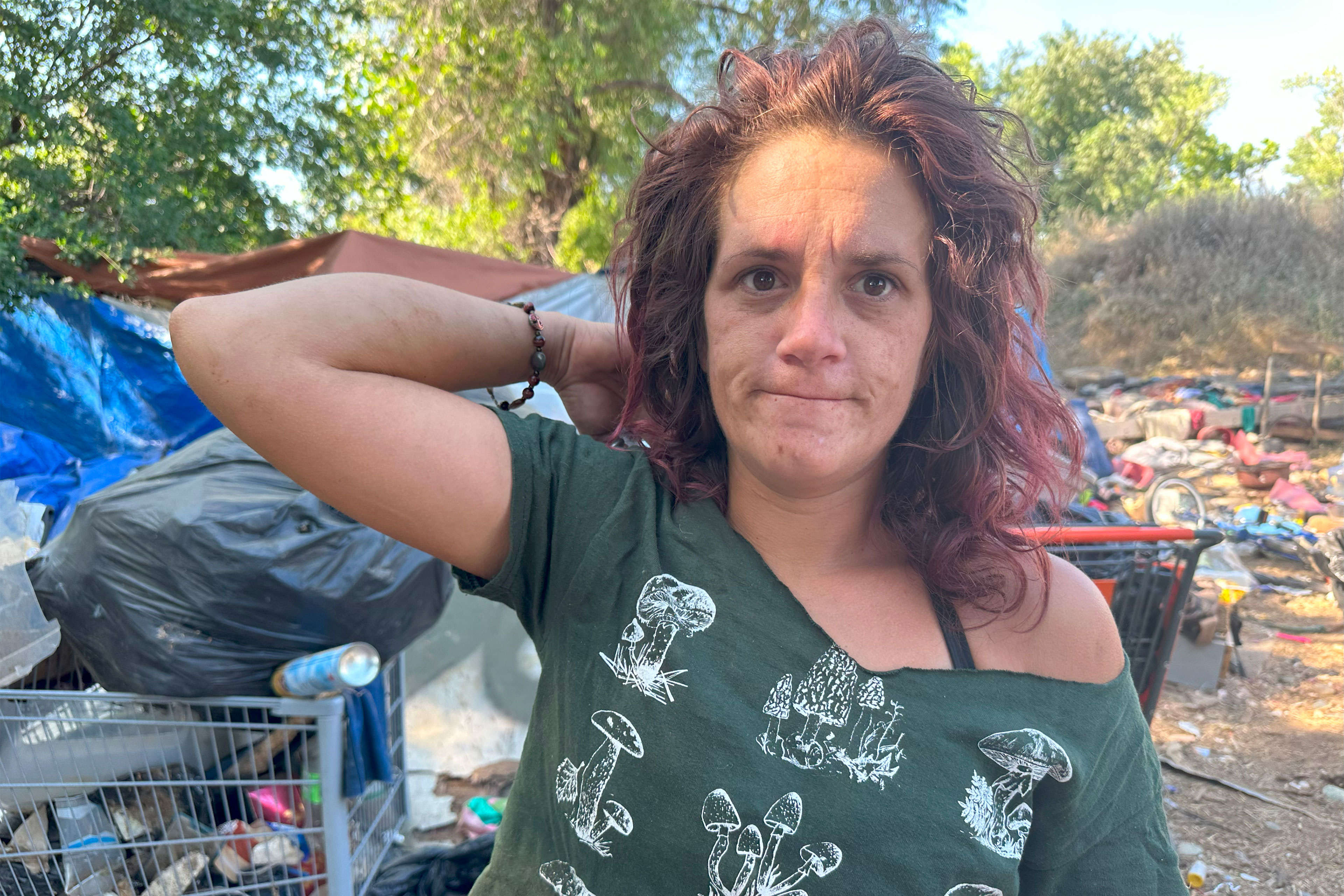
Street Medicine Takes Off
Patton is a young doctor. At 39, he’s on the leading edge of a movement to entrench street medicine in California, home to nearly a third of all homeless people in America. He has specialized in taking care of low-income patients from the start, first as an outreach worker in Salt Lake City and, later, in a family medicine residency in Fort Worth, Texas, focused on street medicine.
In the past two years, the number of street medicine teams operating in California has doubled to at least 50, clustered primarily in Los Angeles and the San Francisco Bay Area, with 20 more in the pipeline, said Brett Feldman, director of street medicine at the University of Southern California’s Keck School of Medicine.
Teams are usually composed of doctors, nurses, and outreach workers, and are funded largely by health insurers, hospitals, and community clinics that serve homeless people who have trouble showing up to appointments. That may be because they don’t have transportation, don’t want to leave pets or belongings unattended in camps, or are too sick to make the trip.
Feldman, who helped persuade Newsom’s administration to expand street medicine, notched a critical success in late 2021 when the state revamped its medical billing system to allow health care providers to charge the state for street medicine services. Medi-Cal had been denying claims because providers had treated patients in the field, not in hospitals or clinics.
“We didn’t even realize our system was denying those claims, so we updated thousands of codes to say street medicine providers can treat people in a homeless shelter, in a mobile unit, in temporary lodging, or on the streets,” said Jacey Cooper, the state Medicaid director, who this month leaves for the Centers for Medicare & Medicaid Services to work on federal Medicaid policy. “We want to transition these women into housing and treatment to give them more hope of keeping their kids.”
The state isn’t pumping new money into street medicine, but primarily redirecting Medicaid funds that would have paid for services in brick-and-mortar facilities.
Cooper has also pushed insurance companies that cover Medi-Cal patients to contract directly with street medicine teams, and some have done so.
Health Net, with about 2.5 million Medi-Cal enrollees across 28 counties, has contracted with 13 street medicine organizations across the state, including in Los Angeles, and is funding training.
“It’s a better use of taxpayer funding to pay for street medicine rather than the emergency room or constantly calling an ambulance,” said Katherine Barresi, senior director of health services for Partnership HealthPlan of California, which serves 800 homeless patients in Shasta County and contracts with Shasta Community Health Center.

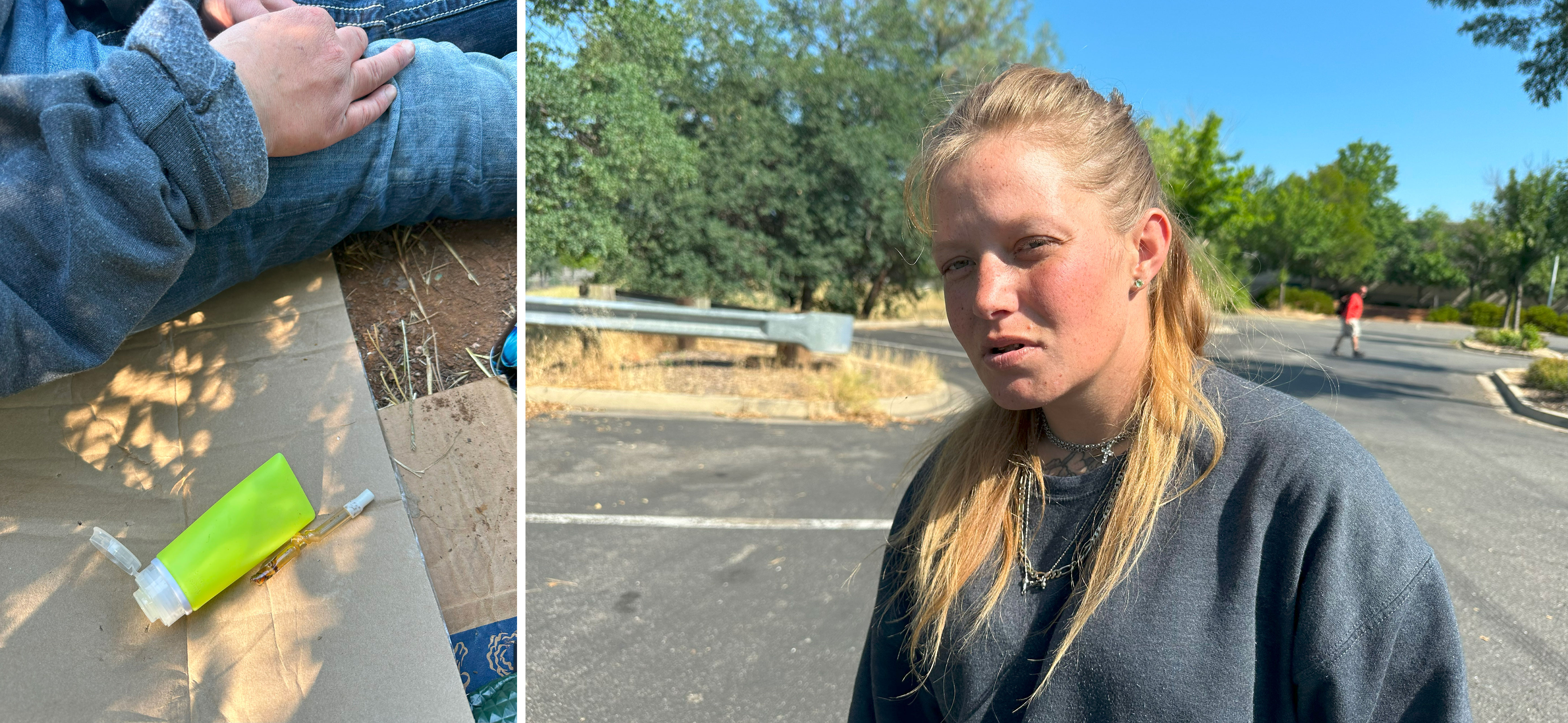
‘There’s No Accountability’
Redding is the county seat of Shasta County, which has experienced a major political upheaval in recent years, driven in part by the anti-vaccine, anti-mask fervor that ignited during the covid-19 pandemic and the Trump presidency.
Yet residents of all political stripes are growing frustrated by the surge in homelessness and open-air drug use — and the spillover effects on neighborhoods — and are pressuring officials to clear encampments and force people into treatment.
“I don’t care if you’re left, right, middle — what’s happening here is out of control,” said Jason Miller, who owns a local sandwich shop called Lucky Miller’s Deli & Market. Miller said he’s had his windows smashed three times — costing $4,500 in repairs — and has caught homeless people defecating and performing lewd acts in his doorway.
Miller moved to Redding 15 years ago from Portland, Oregon, after losing patience with the homeless crisis there, and tries to help, handing out shoes and food.
He said he also understands that many homeless people need more services — such as street medicine.
“I get what they’re trying to do,” he said of street medicine providers. “But there’s a lot of questioning in the community around what they do. There’s no accountability.”
Patton isn’t deterred by the community’s skepticism or the cycle of addiction, even among his pregnant patients. The way he sees it, his job is to provide the best health care he can, no matter the condition his patients are in.
“It’s a lot of wasted energy, judging people and labeling them as noncompliant,” he said. “My job isn’t to determine if a patient is deserving of health care. If a patient is sick or has a disease, I have the skills to help, so I’m going to do it.”
‘I Have the Willpower’
Shasta County, like much of California, is seeing its homeless population explode — and get sicker. An on-the-ground count this year identified 1,013 homeless people in the county, up 27% from 2022. Most are men, but women account for a growing share of Patton’s patients because “more and more are getting pregnant,” he said.
County welfare agencies have little choice but to separate babies from their mothers when substance use or homelessness presents a risk to the children, said Amber Middleton, who oversees homelessness initiatives at the Shasta Community Health Center.
“We are off the charts with maternal substance abuse,” said Middleton, who previously worked for Shasta County’s child welfare agency. “A lot of these women are trying to get clean so they can get their children back, but they’re also trying to give themselves the childhood that they never had.”
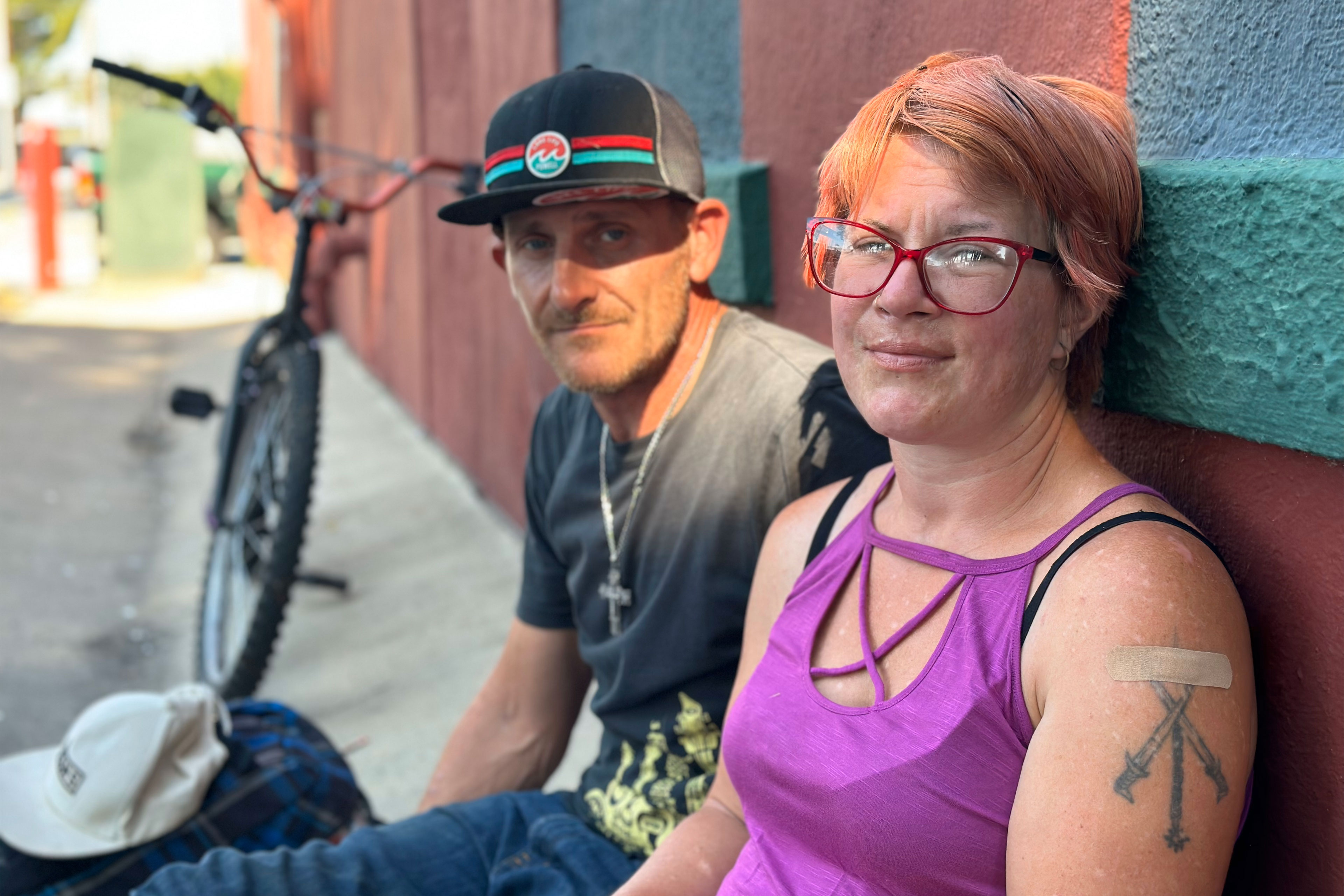
Crespo turned to alcohol and drugs to deal with deep emotional pain from her youth, when she was passed among family members and, she said, beaten repeatedly by one of them.
“He would give me black eyes and I would run away,” she recalled in tears, admitting she has perpetuated that cycle of violence by punching her former husband when she felt provoked.
She has overdosed “more times than I can remember,” she said, and credits naloxone, an opioid overdose reversal drug, for saving her life repeatedly.
Patton routinely tests Crespo and other patients for sexually transmitted infections, gets them on prenatal vitamins, and treats underlying conditions like high blood pressure that can lead to a high-risk pregnancy. And he’s helping women get sober, often using a drug called Suboxone, which is a combination of two medications used to treat opioid addiction. Its forms include a strip that providers snip to make the needed dose.
“A lot of these women have already had children removed, and many are pregnant again,” he said. “If I can get them on Suboxone, they’re going to have a better chance of being successful as a family when they deliver.”
On that sweltering June day, he met Tara Darby, who was on fentanyl and meth and living in a tent along a creek that feeds into the Sacramento River. Patton started her on a course of Suboxone and got her into a hotel with her boyfriend to help her deal with the initial detox.
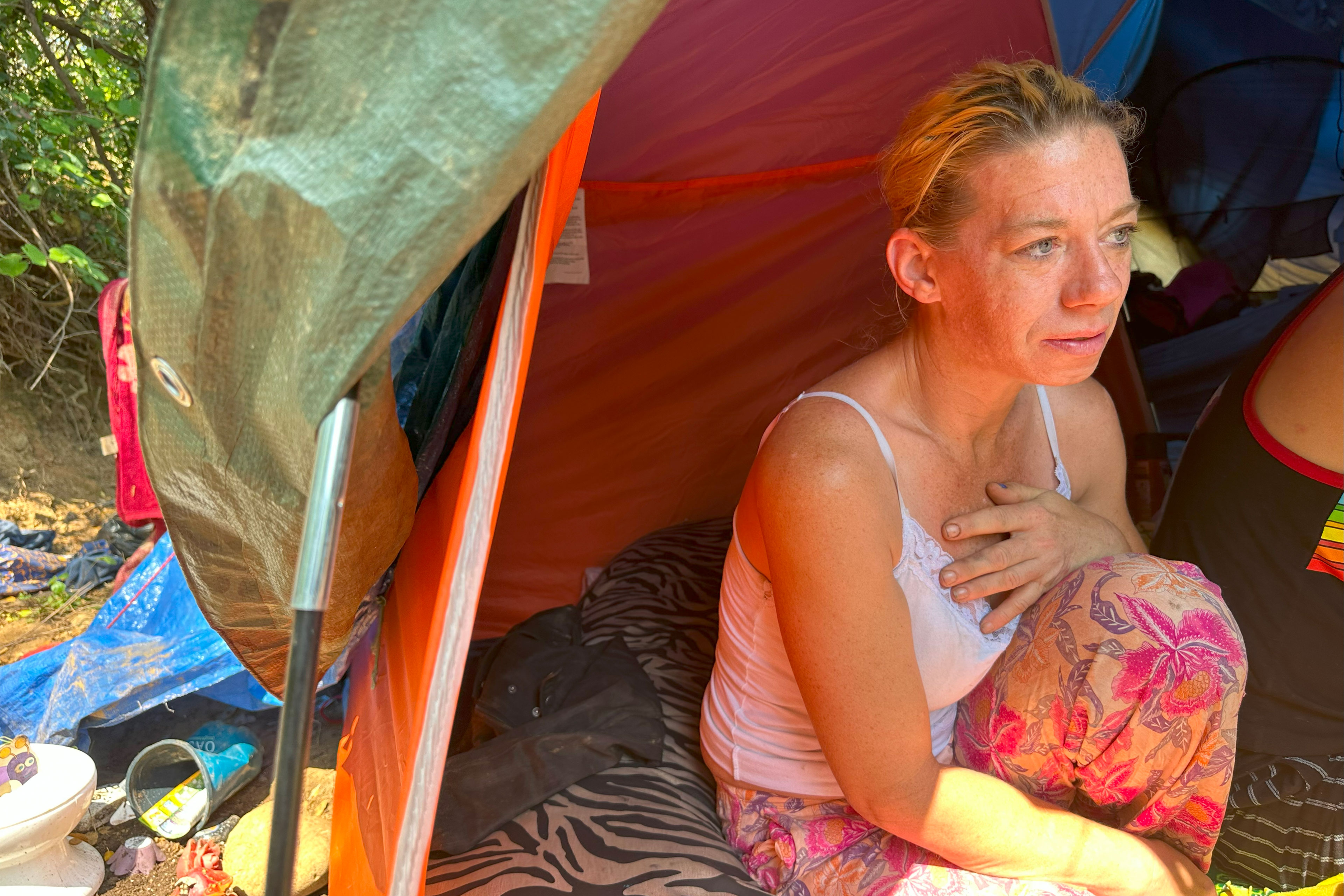
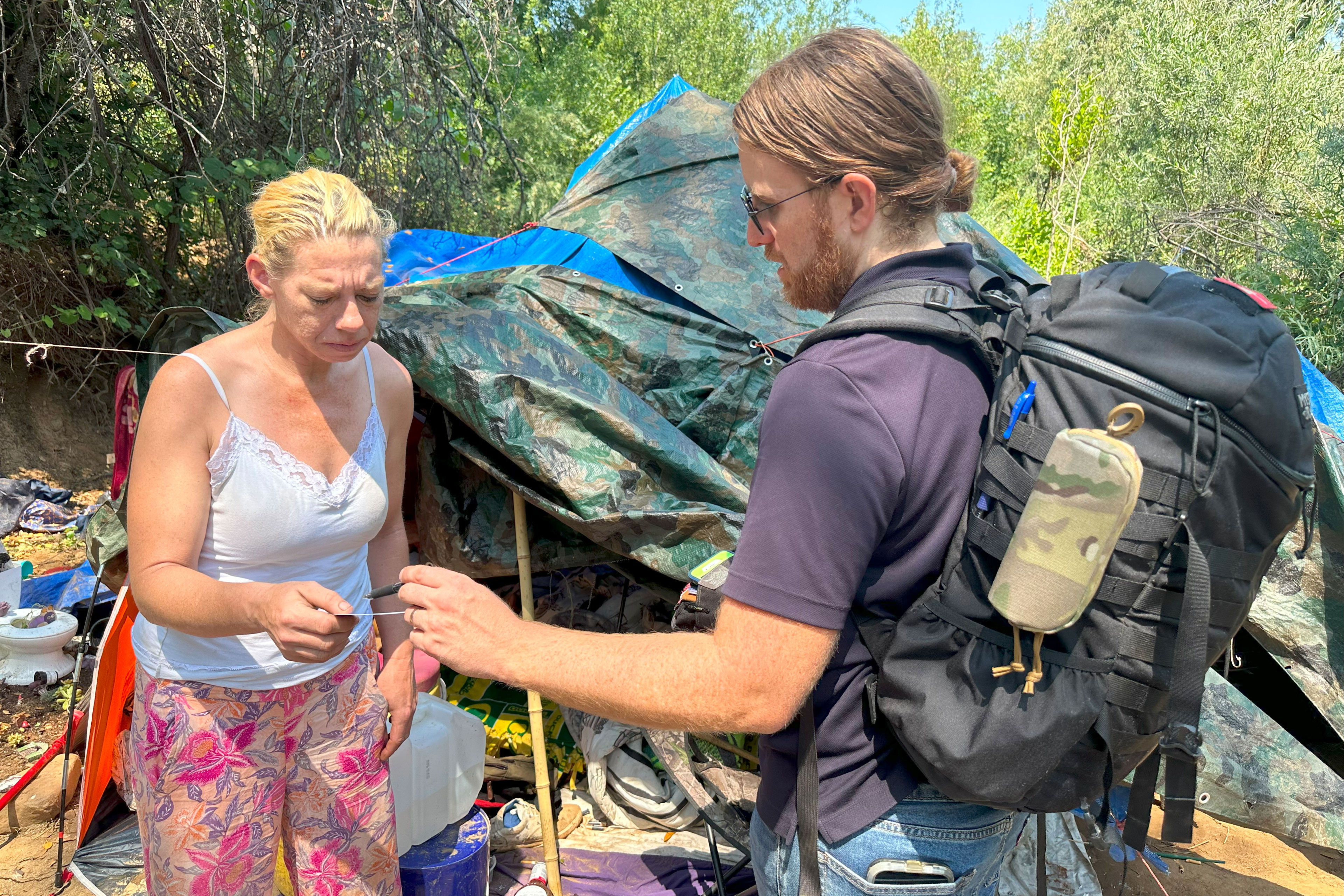
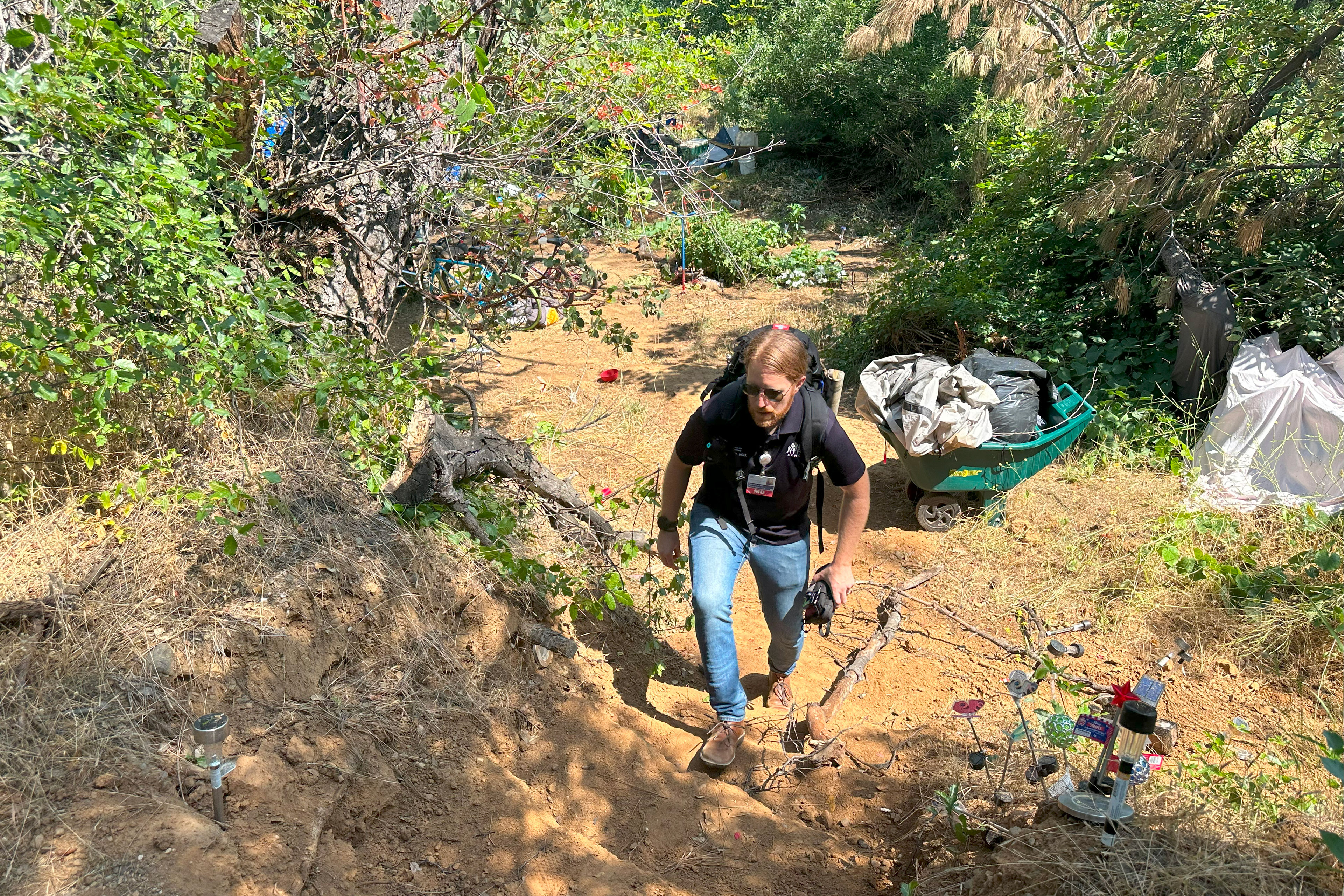
He also administered a pregnancy test and discovered she was already a few months along. “It’s rough out here. There’s no bathroom or water. You’re nauseous all the time,” Darby, 40, said. “I want to get out of this situation, but I’m terrified about getting clean, the detox, having my baby.”
When Patton offered her support from a drug and alcohol treatment counselor, Darby promised to try. “I want to do it. I have the willpower,” she said.
Across town, Kristen St. Clair was nearly 7 months pregnant and living in a hotel paid for by Shasta Community Health Center. Patton was helping her and her boyfriend, Brandt Clifford, get off fentanyl.
“I want to have a healthy, happy life with my baby,” said St. Clair, 42, who already had one baby taken from her due largely to her drug use. “I’m worried it’s too late now.”
But the prospect of getting clean felt daunting. Clifford, the father of her child, and an Iraq War veteran with a traumatic brain injury, had overdosed the previous day and needed five doses of naloxone to come back. “We saved your life, man,” Patton told Clifford.
Patton snipped a strip of Suboxone, explaining that addiction is complicated. “Science is showing that, for whatever reason, certain people were born with the right mix of genetic predisposition and then have had various things happen to them in their lives, which are unfair,” he said.
“And then when you tried opioids for the first time, your brain said to you, ‘This is the way I am supposed to feel.’ It takes very little to get hooked.”
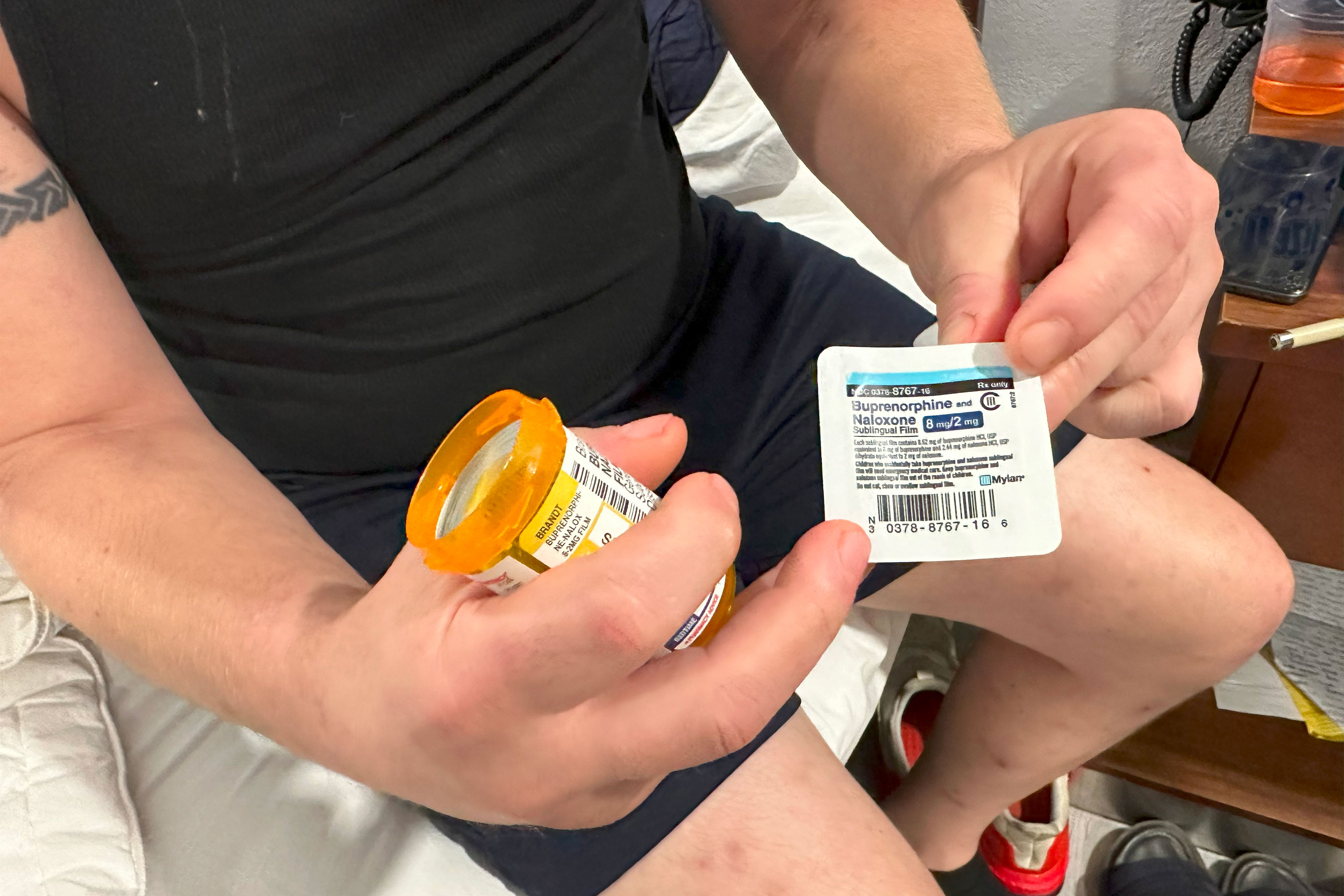
Despite their desperation to kick their drug habit, St. Clair and Clifford have since relapsed, Patton reported. St. Clair delivered in early September, and her little boy was taken into custody to “withdraw in a neonatal abstinence program,” Patton said. Darby, who was evicted from her hotel room after relapsing, was in residential treatment to get sober as of early October.
Crespo is making headway, Patton said. She and her boyfriend, Andy Gothan, 43, are staying at a hotel while Patton’s team helps her hunt for a landlord who will accept a low-income housing voucher.
“I’m so close. They’ve helped me so much,” Crespo said. Meth is “always around, always available. If I can get inside, it’ll help me deal with the stress of getting clean without all those triggers.”
This article was produced by KFF Health News, which publishes California Healthline, an editorially independent service of the California Health Care Foundation.



